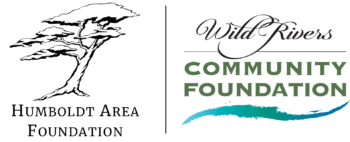BAYSIDE, CA — The competition for billions of federal grant dollars available each year is fierce and not easy for beginners nor for the faint of heart. That’s why Humboldt Area Foundation and Wild Rivers Community Foundation (HAF+WRCF) offered nonprofits, government and tribal organizations in Humboldt, Trinity, Del Norte and Curry counties an intensive, 8-month federal grant development training course in 2022 that is now yielding results.
Twenty-one people participated in the pilot program, spending three days each month from March to November learning how to craft compelling proposals for federal grants.
“Grant Architects was an amazing program. I learned so much about the grant writing process and the way nonprofit funding models operate,” said Lark Doolan, executive director of Queer Humboldt. “The opportunity to deepen connections and collaborate with local tribes and nonprofits across the region was invaluable. From the beginning of the program to the end of the program, our annual budget at Queer Humboldt basically doubled due to new grant funding that we acquired by utilizing the skills taught in the program.”
Tim Hoone, course trainer and Planning Director for the Tolowa Dee-ni’ Nation in Smith River, said, “In general, everyone found the training beneficial and enjoyed connecting with others. Cohort members said they wanted to meet monthly, to stay connected, share ideas, and highlight available grant opportunities. I’m thankful for HAF+WRCF’s support of this training and asking the question of whether we could train people in federal grant development skills. Turns out we sure can!”
Hoone was joined by trainer Lyn Craig, an independent grants consultant based in eastern Oregon. Consultant Angela Glore, also an experienced grant writer, served as facilitator. Hoone and Craig are graduates of an intensive, hands-on 10-month training in federal grant writing, sponsored by The Ford Family Foundation in 2014-15.
The training:
HAF+WRCF, with support from the Roundhouse Foundation, developed the “Grant Architects” training —modeled after one created by the Ford Family Foundation — because it knew that many organizations and local tribal and government entities were missing out on significant federal grant money. The course is designed to help state, county and local agencies, educational institutions, hospitals, private nonprofit organizations, and even for-profit organizations that are eligible for specific programs.
The presenters shared in-depth information, tips, and techniques covering virtually every component of federal grant writing — from learning about funding resources to collaborative planning, development of all parts of a strong proposal, and follow-up upon successful notice of a grant award. While the course focused primarily on developing successful federal grant proposals, tools for writing foundation grants were also presented.
Several participants submitted grant proposals during the course, with some in-class celebrations for the announcement of successful applications. Four months after the training ended, two participants had either submitted or were in the process of submitting federal grant proposals. Multiple others had submitted proposals to foundations or state government programs. In total, participants have brought more than $3 million in new funding to their organizations because of the training.
Comments from participants included:
“The growth from this training was immeasurable. We are living in a whole new ballpark when it comes to our ability to apply for and manage grants.”
“I’ve become more efficient at finding NOFOs relevant to our organization. Learning how to paint a picture for reviewers and funders through storytelling elevated my grant narrative writing skills.”
“The Grant Architects training empowered me to apply for federal funding, strengthened my overall grant writing skills, and provided a toolbox to expand the capacity of our organization.”
“I personally would recommend having this funded again as this was an invaluable experience for many of us, including myself. I’ve seen a lot more cohesiveness in efforts to support community work together rather than siloed efforts. Not only did we learn about grant writing, but we also learned how to reframe our thinking.”
